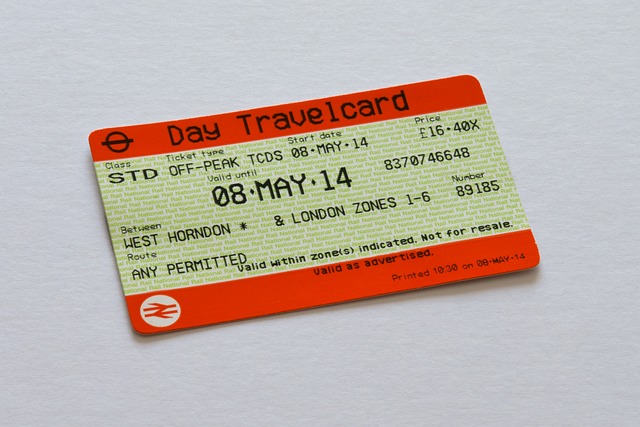Vignette Tickets Explained: Navigating Fees and Forging Connections
Traveling, whether for business or pleasure, often comes with a myriad of challenges, one of which is managing transportation tickets. Among these, vignette tickets have gained popularity in several countries, especially in Europe. This article aims to provide a comprehensive overview of vignette tickets, delving into their purpose, how they work, associated fees, and their impact on travel connectivity.
Understanding Vignette Tickets
A vignette ticket is a form of toll payment required to use certain roads, highways, or zones, particularly in some European countries. Unlike traditional toll booths where drivers pay at checkpoints, vignette tickets are usually purchased in advance for a specified duration. This system helps streamline traffic flow, minimizing congestion at toll points.
The concept of a vignette originated as an easy method for collecting road usage fees without hindering traffic. Countries such as Switzerland, Austria, Hungary, and the Czech Republic have adopted this model as a way to manage their transport infrastructure funding while ensuring that both local and visiting drivers contribute to road maintenance.
How Vignette Tickets Work
Vignette tickets can be purchased in various ways, including at gas stations, online, or at official vending machines located near border crossing points. Depending on the country, the tickets may be valid for a specific number of days, weeks, or even months. The tickets often come in various price tiers, allowing drivers to select based on their expected usage.
Once purchased, the vignette must usually be affixed to the vehicle in a visible location, such as the windshield, to indicate compliance. Authorities can easily check for vignettes during roadside inspections, and penalties for not displaying a valid vignette can be quite severe, often resulting in hefty fines.
Types of Vignette Tickets
Vignette tickets vary widely depending on the country and the type of vehicle. Here’s a brief overview of common types:
Motor Vehicle Vignettes: These are designed for standard cars, vans, and light trucks, typically categorized based on the vehicle’s weight and emissions. Short-term, annual, and long-term options are available.
Heavy Vehicle Vignettes: Larger vehicles, including trucks and buses, often require different types of vignettes due to their significant impact on roadway wear and tear. These vignettes may be more expensive and are typically subject to stricter rules based on vehicle size and weight.
Environmental Vignettes: Some countries, particularly in the European Union, provide discounts for vehicles that meet specific environmental standards. This incentivizes travelers to use more eco-friendly transportation options.
Navigating Fees and Costs
The costs associated with vignette tickets can vary dramatically depending on the country, the length of needed coverage, and the type of vehicle. Typically, fees are structured as follows:
Short-Term Passes: Ideal for tourists or travelers on short trips, short-term passes usually range from a few euros to a higher price point based on duration (e.g., 10 days, 30 days). These options allow drivers to enjoy flexibility without committing to a long-term solution.
Annual Vignettes: For frequent travelers or residents, annual vignettes offer a more economical solution if driving regularly. Stretching the cost over the year typically promotes savings compared to purchasing multiple short-term passes.
Enforcement Fees: It is crucial for drivers to be aware of the enforcement fees associated with not displaying a valid vignette. Penalties can significantly outweigh the cost of purchasing a vignette, so it’s wise to ensure compliance at all times.
Benefits of Using Vignette Tickets
The vignette system provides several advantages for travelers and governments alike:
Simplified Toll Payment: Vignettes eliminate the need for cash or card transactions at toll booths, enhancing the driving experience by promoting smoother traffic flow and fewer stops.
Revenue Generation for Road Maintenance: The funds collected from vignette sales are often earmarked for road maintenance and improvements. Investing in the infrastructure leads to safer and better-maintained roads for everyone.
Environmental Benefits: By encouraging drivers to consider long-term arrangements or eco-friendly vehicles (through lower fees), the vignette system contributes to reduced emissions and environmental impact.
Challenges and Considerations
While vignette tickets offer numerous advantages, they also come with certain challenges that travelers need to navigate:
Awareness and Regulation Variation: Travelers may not always be aware of vignette requirements in each country they visit. Regulations can differ significantly, and ignorance of the rules could lead to fines.
Purchase Difficulties: Depending on where one is traveling from, obtaining a vignette might be challenging. Not all vendors accept credit cards, and internet access may be limited in remote areas.
Lack of Flexibility: Unlike traditional toll systems, once a vignette is purchased, its duration cannot be altered, which can pose issues for unexpected trip changes or delays.
Impact on Travel Connectivity
The introduction and enforcement of vignette systems have had a substantial impact on travel connectivity within Europe and beyond. For one, vignette tickets can facilitate easier travel between neighboring countries. The harmonization of ticketing systems in certain regions enables smoother cross-border travel, allowing drivers to focus more on their journey rather than constant fee adjustments.
Moreover, the vignette system has prompted associations between nations aimed at creating standardized regulations and improving traveler experiences. This kind of cooperation is crucial in an increasingly interconnected world, where seamless travel is essential for both tourism and commerce.
Conclusion
Navigating the complexities of vignette tickets requires a sound understanding of their purpose, how they function, and the associated fees. As efficient alternatives to traditional toll systems, vignettes enhance the travel experience by alleviating congestion and supporting infrastructure funding. While challenges and potential drawbacks exist, the overall benefits are evident in promoting better road connectivity and fostering environmental responsibility among travelers.
For any traveler, understanding vignette tickets not only ensures compliance with local regulations but also contributes to a smoother, more enjoyable journey across Europe’s ever-popular highways and roads. As the travel landscape evolves, knowledge about such systems will undoubtedly provide a distinct advantage on the road.


